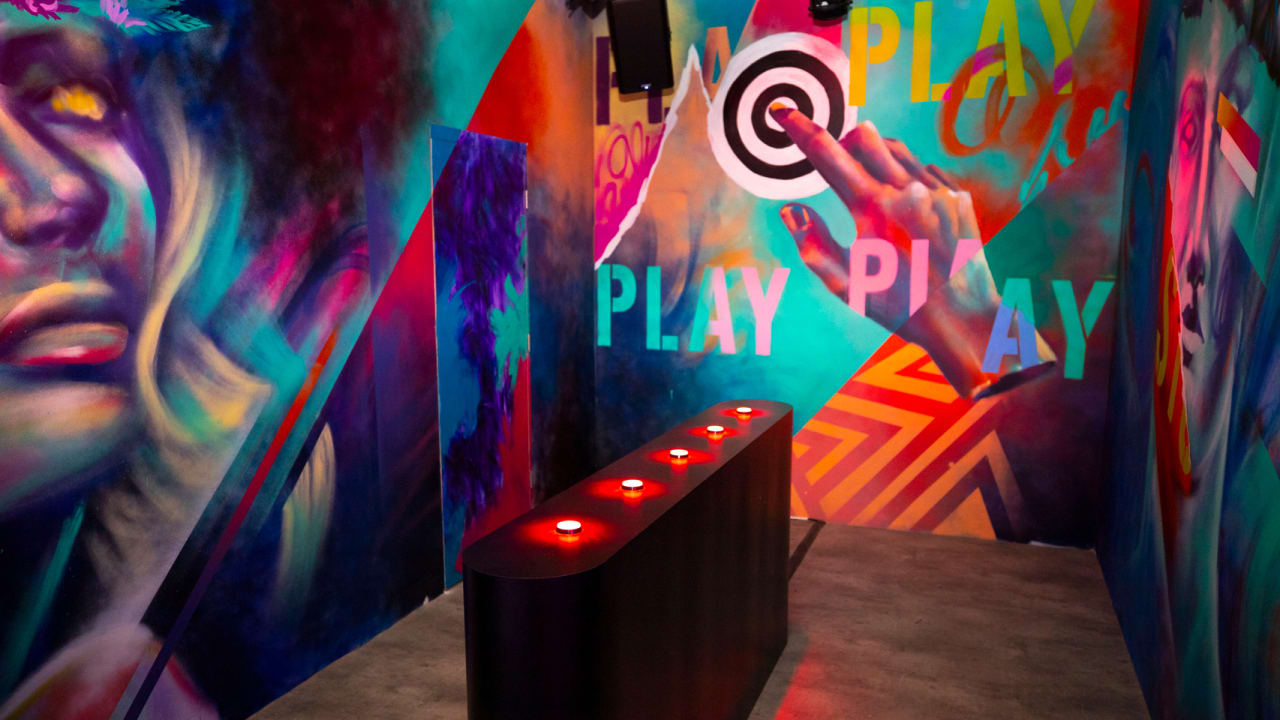Inside the all-new 9,000 square foot New York Weed Exhibit
[ad_1]
“You have achieved enlightenment,” a friendly voice tells me as I reach the top of the elevator. To my left is a floral fresco punctuated by the word “High” in glossy pink cursive in the center. To my right is a lush green wall with a sign that says ‘The Stone Age’.
This is not an exhibition about cavemen. It is an exhibition on the grass.
It seems entirely appropriate that New York City has its own marijuana exhibit. As the plant has been legalized for recreational use in recent years (Washington and Colorado came out on top in 2012; New York joined the ranks in March of this year), a plethora of marijuana-themed museums and of immersive experiences have sprung up across the country, from Grass museum in Los Angeles until next Cannabulation in Las Vegas.
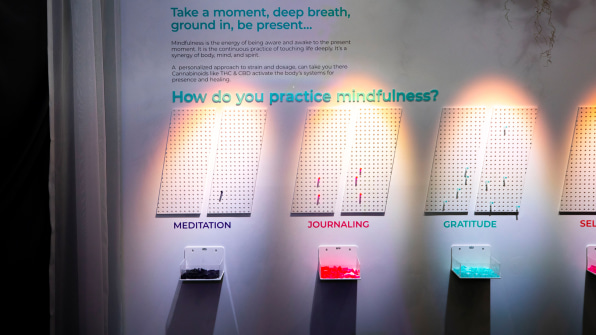
Covering 9,000 square feet in a Chelsea building, the New York-based company opened last week. It’s a fun exhibit with a serious mission to destigmatize cannabis and explore the plant‘s complicated relationship with mass incarceration, social justice, the opioid epidemic, and sexual well-being. Featuring the works of eight street artists, some of whom have been personally affected by the criminalization of cannabis, the Stone Age takes visitors on a journey through the senses while raising awareness of a plant that has been misunderstood and used as a tool of discrimination for over a century.
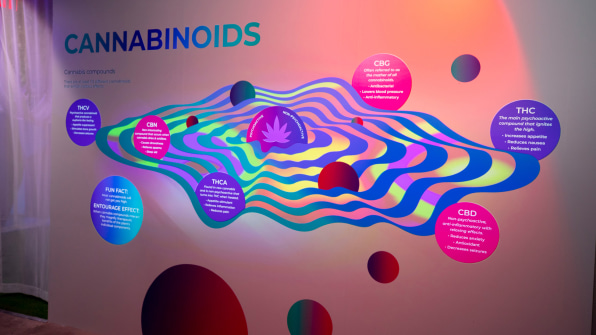
For the record, this is not a cannabis-centric experience (neither medical nor recreational cannabis is distributed on-site, although the FAQ section of the website states that you are encouraged to do all of this. that you like to “improve†your experience beforehand). It’s an awareness program. “For us, cannabis is more than getting high,†says Sasha Perelman, who curated the exhibition alongside Elizabeth Santana. Together, Perelman and Santana have produced hundreds of events for brands in cannabis, wellness, and other industries. “There are a lot of conversations where cannabis is becoming the catalyst and we’re really excited to have this space and promote a conversation around,†Perelman said.
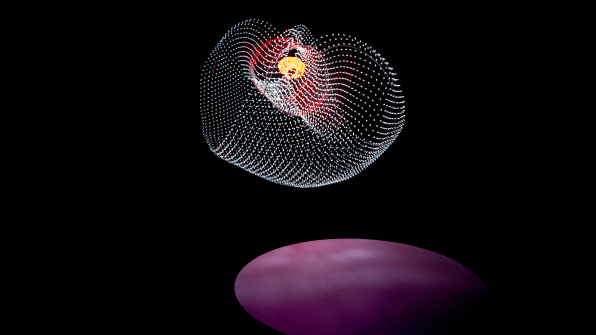
This conversation begins with a four-piece exhibition on sexual well-being. The first room portrays a sense of anticipation through a large pendulum swinging above a forest of vertical matches, almost brushing the surface. The final room features an ethereal LED sculpture that vibrates with light. Inside is an evocative red core. Designed by Brooklyn artist and designer Jason krugman, light is a sculptural interpretation of what an orgasm looks like. (Upon reflection, perhaps he should have been conceived by a woman.)
This part of the exhibition alludes to the relationship between cannabis and pleasure. “Cannabis helps release dopamine, which not only impacts our receptors and nerve pathways, but it also improves our sense of touch or smell,†says Perelman, noting that it can be particularly helpful. for people who find it difficult to be comfortable physically but also mentally. Perhaps this idea could have been made more visible in the series – there’s only one sign on the relationship between sexual well-being and the plant – but maybe it’s about leave some things to the imagination.

The exhibit goes on to describe the long-standing correlation between cannabis and creativity (a pretty DJ booth lets you dial your own beat), before taking on a darker tone. In a white corner of space, a “tornado of prescriptions,” as Santana calls it, twists from the ground. “The drug addiction and the epidemic didn’t start on the streets, it started behind the desk with someone writing a prescription,†she says.
In 2016, 2.5 million Americans battles opioid addiction and more than 100 people in the US die of drug overdoses everyday. The exhibit suggests that there is a more natural way to heal. “The benefits of cannabis as a natural pain reliever medicine may not only help opioid withdrawal but I hope to alleviate your need to try opioids, â€says Perelman. According to a Study 2019 published in the American Journal of Psychiatry, CBD oil has significantly reduced cravings and anxiety in patients who detox from opioid drugs, which may make detoxification more tolerable and also decrease the risk of relapse.

Much of the exhibition focuses on the multifaceted potential of cannabis, but the drug also has a racist history. A timeline shows how anti-marijuana campaigns have been used to demonize the plant since the Marihuana Tax Act of 1937, specifically targeting minorities and black Americans. Harry Anslinger, the man who declared the war on drugs, is referenced below the timeline with a disgusting quote: “Reefer makes black people believe they are as good as white men.”
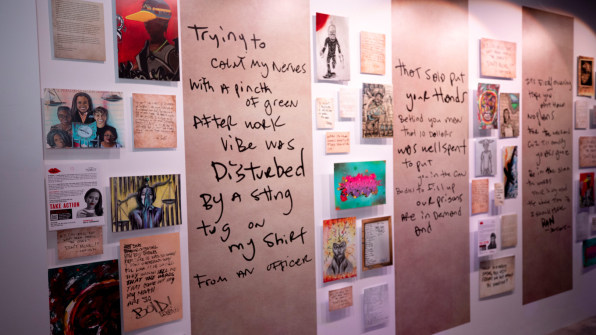
According to a 2020 American Civil Liberties Union report, black people in the United States are almost four times more likely be arrested for possession of marijuana than whites, even though both groups use marijuana at similar rates. In 2018, more than 450,000 people were serving time for a drug charge, two-thirds of whom were people of color. And that number is particularly staggering given that recreational use of cannabis is now legal in 18 states. In the Stone Age, the team worked with the Last Prisoner Project– a non-profit organization that campaigns for the release of these non-violent prisoners – and has commissioned works of art from individuals who have been or are in prison. (Originals are available for purchase in the gift shop; all proceeds will go into the hands of the artists).

This installation culminates in a prison cell. Passing past a mural painted by an artist who was previously incarcerated (she chose to remain anonymous), visitors enter a dreary gray cell with a shaky bed in the corner and a poignant projection of hundreds of pointing marks filling in. slowly up the wall. Depending on the crime classification, convictions for marijuana-related felony range from five days to 15 years. “Twenty-four hours a day without freedom,†says Santana.
Basically, Stone Age uses cannabis as a vehicle to explore larger issues. “These are conversations that make a lot of people uncomfortable,†says Perelman. “We want to create a space where, in a fun, entertaining, and empowering way, we can spark these types of dialogues and start to create a new narrative and create more progress.”
Stone Age is scheduled for a limited time (the exact end date is yet to be determined). Tickets start at $ 45. Part of the sales will be donated to the Last Prisoner project.
[ad_2]

